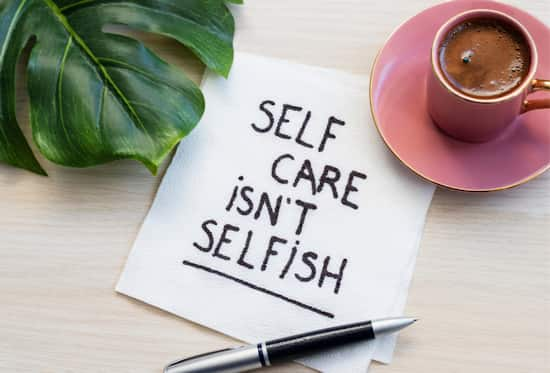Have you ever found yourself in a state of confusion and disorientation, unsure of which direction to take? Feeling lost is a common experience that can leave us feeling stuck and frustrated. The good news is that with the right strategies and mindset, you can regain your focus and get back on track towards a fulfilling life.

As a hypnotherapist and life coach, I have helped others to regain their center and find that gain that connection back within, and in this article, I will share practical tips to guide you on your journey of rediscovery to yourself.
You have the power to heal your life, and you need to know that. We think so often that we are helpless, but we’re not. We always have the power of our minds…Claim and consciously use your power.
Louise Hay
Understanding the Nature of Feeling Lost
Feeling lost is a complex emotional state that can leave you feeling disconnected, unsure of yourself, and without a clear sense of direction. It’s important to explore the underlying causes of this feeling to effectively address it.
Feeling lost can stem from a variety of circumstances and experiences. Some common causes include:
- Major Life Transitions: Significant changes such as career shifts, ending or starting relationships, moving to a new city, or experiencing a loss can disrupt our sense of stability and purpose. These transitions often require us to redefine ourselves and our goals.
- Lack of Clarity: Sometimes, feeling lost arises from a lack of clarity about who we are and what we truly want. We may have been following a path that others expected of us, rather than pursuing our own passions and desires. This disconnect between our authentic selves and our choices can leave us feeling adrift.
- Burnout and Overwhelm: Excessive stress, prolonged periods of pressure, and an imbalance between work and personal life can lead to burnout. When we’re constantly running on empty, it’s easy to lose sight of our goals and aspirations, as well as our own well-being.
- Failure and Setbacks: Experiencing failure or setbacks can shake our confidence and make us question our abilities and worth. It can create a sense of being off track and unsure of how to move forward.
To initiate the process of getting back on track, it’s crucial to take a moment for self-reflection and awareness. Look within yourself to identify the underlying reasons for feeling lost.
Consider patterns, limiting beliefs, and self-sabotaging behaviors that might be holding you back. Journaling can be a powerful tool to gain clarity and insight into your true desires and aspirations.
Recognizing and addressing the emotions associated with feeling lost is a crucial step toward initiating personal growth and regaining a sense of purpose. It’s important to acknowledge that feeling lost can be a natural part of the human experience and it can also serve as a catalyst for positive change.
By understanding the causes of feeling lost, we gain valuable insights into ourselves and our desires. This self-awareness allows us to make intentional choices and take proactive steps towards realigning with our values and aspirations.
Remember, feeling lost is not a permanent state. It’s an opportunity for growth, self-discovery, and finding a renewed sense of direction. By exploring the nature of feeling lost and addressing it with compassion and determination, you can navigate your way back to a life filled with clarity, purpose, and fulfillment.
Defining Personal Values and Goals
Values serve as guiding principles that shape our decisions, actions, and priorities. They are the foundation upon which we build our lives. When we feel lost, reconnecting with our values provides a solid framework for finding our way back.

Take some time to reflect on what truly matters to you. Consider the qualities and principles that resonate deeply with your authentic self. Is it integrity, love, growth, freedom, or something else? These values are unique to you, and they provide a compass for living a meaningful and purpose-driven life.
Once you have a clear understanding of your values, the next step is to define your goals. Goals give direction and purpose to our actions, and they provide milestones on the journey to self-discovery and success.
Consider both short-term and long-term goals that align with your values. Short-term goals are achievable within a relatively shorter time frame, while long-term goals require more planning and commitment.
These goals can encompass various aspects of life, such as career, relationships, health, personal development, or contribution to society.
As you define your goals, make sure they are specific, measurable, attainable, relevant, and time-bound (SMART). This helps bring clarity and structure to your aspirations, making them more actionable and achievable.
Setting goals is only the beginning; taking action is where the magic happens. To bring your goals to life, you need an actionable plan that outlines the steps required to achieve them.
Break down your goals into smaller, manageable steps. This allows you to focus on one task at a time, preventing overwhelm and increasing your chances of success. Each step should be clear, specific, and measurable. Create a timeline or schedule to keep yourself accountable and track your progress.
Remember, progress is not always linear, and setbacks may occur along the way. Embrace the journey and be flexible in adjusting your plan as needed. Celebrate your accomplishments, no matter how small, and use any setbacks as opportunities for learning and growth.
By defining personal values and setting goals aligned with those values, you empower yourself to live a life of authenticity, purpose, and fulfillment. Let your values and goals be the guiding lights that lead you back to the path you were meant to walk.
Stay committed, take consistent action, and watch as your life transforms in meaningful and extraordinary ways.
Developing a Support System
Seeking support from others is a vital component of finding your way when feeling lost. Surround yourself with trusted friends, family, or mentors who can provide guidance and encouragement. Share your aspirations and challenges with them, and let them be a source of inspiration and accountability.
Consider working with a hypnotherapist or life coach who specializes in helping individuals overcome obstacles and achieve their goals. These professionals possess the expertise and tools to guide you through the process of self-discovery and transformation.

Hypnotherapists can assist in uncovering subconscious beliefs and patterns that may be holding you back, helping you reprogram your mind for success and clarity. Life coaches, on the other hand, provide guidance, accountability, and structured support as you set and achieve your goals.
The professional assistance of a hypnotherapist or life coach can accelerate your progress, provide fresh perspectives, and equip you with practical strategies to navigate challenges effectively. Their objective guidance and expertise can empower you to overcome obstacles and tap into your full potential.
In addition to individual support, online communities, support groups, and networking opportunities can provide a sense of connection and belonging. Engage with like-minded individuals who are on similar journeys of self-discovery and personal growth.
Join forums or social media groups focused on personal development, spirituality, or specific areas of interest aligned with your values and goals.
Share your experiences, learn from others, and contribute to the community. These virtual connections can be a source of inspiration, motivation, and encouragement, especially during moments when you need an extra boost.
Remember, developing a support system is not about relying solely on others to solve your challenges. It’s about seeking guidance, understanding, and shared experiences that can provide insights and inspiration on your path to getting back on track.
By actively cultivating a support system, both in personal relationships and through professional assistance, you create a network of people who believe in your potential and provide the encouragement and guidance you need to navigate the twists and turns of your journey.
Together, you can overcome obstacles, celebrate victories, and ultimately rediscover your sense of purpose and direction.
Adopting Positive Habits and Routines
When you feel lost, adopting positive habits and routines can be transformative in helping you regain focus, maintain balance, and create a solid foundation for personal growth. By incorporating healthy practices into your daily life, you can nurture your physical and mental well-being. Here are some key areas to consider:
Physical well-being plays a crucial role in supporting your overall mental and emotional well-being. Make exercise a regular part of your routine. Engaging in physical activity not only improves your physical health but also releases endorphins, the “feel-good” hormones that boost your mood and energy levels.
Find a form of exercise that you enjoy, whether it’s going for a walk, practicing yoga, dancing, or playing a sport. Aim for at least 30 minutes of moderate-intensity exercise most days of the week.
In addition to exercise, pay attention to your nutrition. Fuel your body with nourishing foods that provide energy and support optimal brain function. Focus on consuming a balanced diet rich in fruits, vegetables, whole grains, lean proteins, and healthy fats.
Equally important is getting enough rest and sleep. Establish a consistent sleep routine, ensuring you get the recommended 7-9 hours of quality sleep each night. Prioritize relaxation and create a calming bedtime ritual to promote restful sleep.
Practicing mindfulness can help you regain a sense of clarity and presence, enabling you to make conscious choices and stay focused on the present moment. Engage in mindfulness exercises such as meditation, deep breathing, or mindful walking.
Set aside dedicated time each day to tune into your thoughts, emotions, and sensations without judgment. This practice allows you to develop self-awareness, manage stress, and cultivate emotional balance.
Explore mindfulness-based techniques such as journaling, gratitude practice, or visualization exercises. These practices can help shift your perspective, cultivate positive emotions, and reframe your mindset.
When you feel lost, setting realistic goals and establishing a daily routine can bring structure and purpose to your days. Define specific, achievable goals that align with your values and provide a sense of direction.
Break down your goals into smaller, actionable steps, and integrate them into your daily routine. Prioritize your tasks, allocating time for focused work, self-reflection, and self-care activities. Establishing a routine creates a sense of stability and consistency, reducing feelings of being overwhelmed or adrift.
Ensure your routine includes activities that bring you joy and fulfillment. It could be pursuing a hobby, spending quality time with loved ones, or engaging in activities that align with your passions. These moments of joy nourish your spirit and remind you of the things that truly matter to you.
Practicing Self-Compassion and Celebration
Throughout your journey of rediscovery, remember to practice self-compassion. Be kind to yourself and embrace the process, recognizing that setbacks and challenges are part of growth. Treat yourself with the same kindness and understanding you would extend to a dear friend.

Celebrate your progress, no matter how small. Acknowledge your accomplishments, milestones, and the steps you’ve taken towards getting back on track. Cultivate a positive mindset and focus on your strengths and resilience.
By adopting positive habits and routines, you create a nurturing environment for personal growth and well-being. Prioritize your physical health, cultivate mindfulness, establish realistic goals, and practice self-compassion.
These practices will support you in regaining focus, finding balance, and creating a solid foundation for getting back on track towards a fulfilling life.
Overcoming Fear and Taking Action
Fear can be a significant barrier when you feel lost, holding you back from taking the necessary steps to get back on track. However, by acknowledging and addressing your fears, you can build the courage to take action and move forward with confidence.
Everything you want is on the other side of fear
George Addair
Fear: False Evidence Appearing Real
Britnney Carr
Start by identifying the specific fears that are holding you back. Is it fear of failure, rejection, uncertainty, or judgment? Take the time to explore and understand the root causes of your fears. Often, they stem from past experiences, limiting beliefs, or self-doubt.
Recognize that fear is a natural response to the unknown. It’s a self-protective mechanism designed to keep you safe. However, it can also prevent you from growing and reaching your full potential.
Many fears are based on limiting beliefs and negative self-talk. Challenge these beliefs by questioning their validity and examining the evidence supporting them. Often, you’ll find that they are unfounded or based on past experiences that no longer define you.
Reframe your perspectives by focusing on possibilities, growth, and resilience. Replace negative self-talk with positive affirmations and empowering statements. Remind yourself of your strengths, achievements, and the potential for success.

To overcome fear, start by taking small, manageable steps towards your goals. Break down your actions into smaller tasks that feel less intimidating. By gradually exposing yourself to the discomfort of the unknown, you’ll build resilience and confidence.
Acknowledge that discomfort is a natural part of growth. Embrace it as a sign that you’re pushing beyond your comfort zone and expanding your boundaries. Remember, the most significant personal transformations often occur when you’re willing to face your fears and take action despite them.
Seeking Support and Accountability
Enlist the support of your trusted friends, family, or a mentor to help you overcome fear and stay accountable. Find a therapist that can help you to understand and guide you. Share your goals and fears with them and ask for their encouragement and experience.
Having someone by your side who believes in you can provide a sense of reassurance and motivation.
Consider joining a supportive community or finding an accountability partner who shares similar aspirations. Surrounding yourself with like-minded individuals who are also striving for personal growth can create a positive and empowering environment.
Recognize that failure is a natural part of the learning process and personal growth. Shift your perspective on failure from being a negative outcome to being a stepping stone towards success. Embrace the lessons and insights gained from failures, and view them as valuable feedback on your journey.
View each step you take, regardless of the outcome, as progress and an opportunity for learning and growth. Celebrate your courage and resilience in facing your fears and taking action, regardless of the results.
By acknowledging and addressing your fears, challenging limiting beliefs, and taking action despite discomfort, you can overcome fear and move forward towards your goals. Embrace the support of others, embrace failure as a part of the journey, and celebrate your progress along the way.
Remember, true growth happens when you have the courage to confront your fears and take bold steps towards the life you desire.
Utilizing Hypnotherapy and Visualization Techniques
Hypnotherapy and visualization techniques can be powerful allies on your journey to getting back on track. Hypnotherapy works by reprogramming subconscious beliefs and behavior patterns that may be hindering your progress. Visualization exercises, on the other hand, help create a clear mental picture of your desired outcomes.
Hypnotherapy and visualization techniques can be powerful tools to support you in getting back on track when you feel lost. These practices tap into the power of your subconscious mind, helping you reframe your thoughts, beliefs, and perspectives. Here’s how you can utilize hypnotherapy and visualization for personal transformation:
Hypnotherapy is a therapeutic approach that utilizes guided relaxation, focused attention, and positive suggestions to access the subconscious mind. It allows you to enter a state of deep relaxation and heightened receptivity, where your mind is open to positive changes and suggestions.
Through hypnotherapy, you can address limiting beliefs, release emotional blockages, and reprogram your subconscious mind with empowering thoughts and beliefs. It can help you gain insights, access inner resources, and transform self-sabotaging patterns.
Working with a qualified hypnotherapist can provide personalized guidance and support. They can tailor sessions to your specific needs, helping you navigate through challenges, overcome obstacles, and reconnect with your inner wisdom and potential.
Self-hypnosis is a self-directed practice that allows you to induce a hypnotic state on your own. It empowers you to take control of your thoughts and emotions, promoting self-awareness and personal transformation.
To practice self-hypnosis, find a quiet and comfortable space where you won’t be disturbed. Relax your body and mind through deep breathing and progressive muscle relaxation techniques. Then, repeat positive affirmations or visualize yourself confidently and successfully navigating the challenges you’re facing.
Repetition is key in self-hypnosis. Regularly dedicate time to practice, ideally on a daily basis. Over time, you’ll strengthen your ability to enter a focused and receptive state, allowing the positive suggestions and visualizations to take root in your subconscious mind.
Visualization is a technique that involves creating detailed mental images of desired outcomes and experiences. It engages your imagination and taps into the power of your mind to manifest positive changes in your life.
To practice visualization, start by clarifying your goals and desires. Close your eyes and imagine yourself already achieving those goals. Engage all your senses to make the visualization experience as vivid as possible. Visualize the sights, sounds, smells, and emotions associated with your desired outcome.
As you engage in visualization, believe and feel as if the desired outcome has already been accomplished. Embody the emotions of joy, confidence, and fulfillment that come with achieving your goals. This process helps rewire your subconscious mind and align your thoughts and beliefs with your aspirations.
Regularly incorporate visualization into your daily routine, especially during moments of relaxation and before sleep. The more you practice, the more your subconscious mind accepts and acts upon the images and emotions you create.
You can find some helpful visualization exercises as well here.
To fully utilize the benefits of hypnotherapy and visualization, integrate these practices into your daily routine. Dedicate specific time each day for self-hypnosis or visualization sessions. Create a calm and comfortable environment that supports relaxation and focus.
Combine these practices with affirmations and positive self-talk to reinforce the desired changes in your subconscious mind. Affirm your capabilities, strengths, and commitment to getting back on track. Use positive language and present tense when formulating affirmations to strengthen their impact.
Remember, consistency and repetition are key. Regularly engaging in hypnotherapy and visualization sessions reinforces positive changes, rewires your brain, and strengthens your belief in your ability to overcome obstacles and achieve your goals.
By utilizing hypnotherapy and visualization techniques, you tap into the power of your subconscious mind to facilitate personal transformation and guide you back on track.
In conclusion, feeling lost is a temporary state that can be overcome with the right strategies and mindset.
By understanding the nature of feeling lost, defining your values and goals, developing a support system, adopting positive habits, overcoming fear, and utilizing hypnotherapy and visualization techniques, you can rediscover your path and regain a sense of purpose and fulfillment.
Remember, you have the power to create the life you desire. Take that first step today and know that it is possible to get back on track.
A journey of a thousand miles begins with a single step.
Lao Tzu





